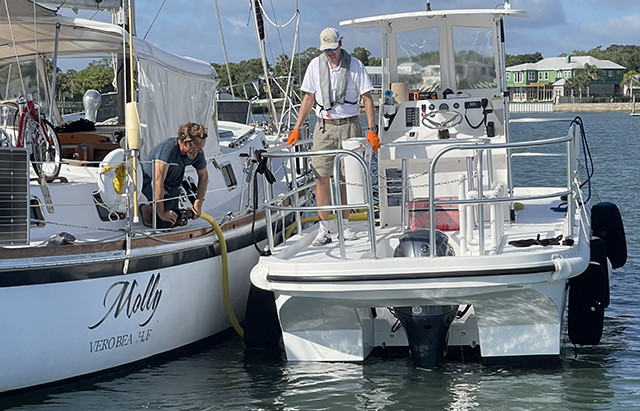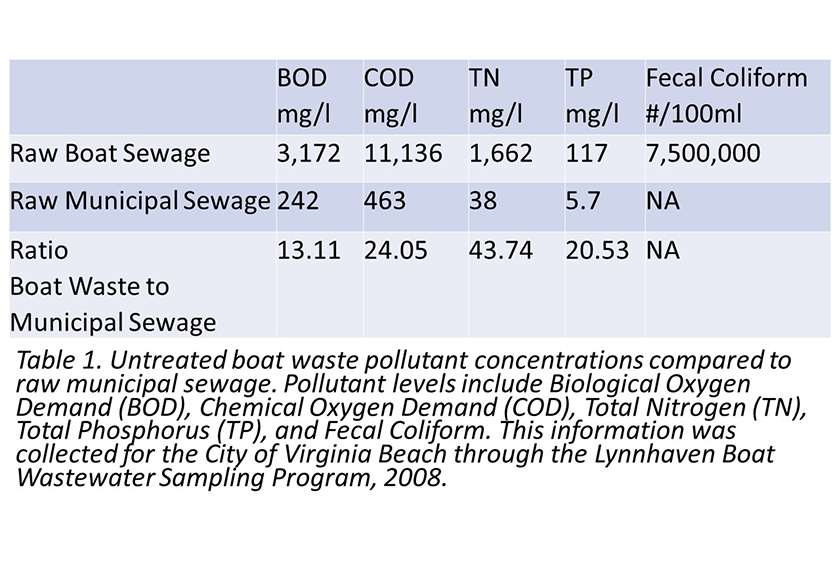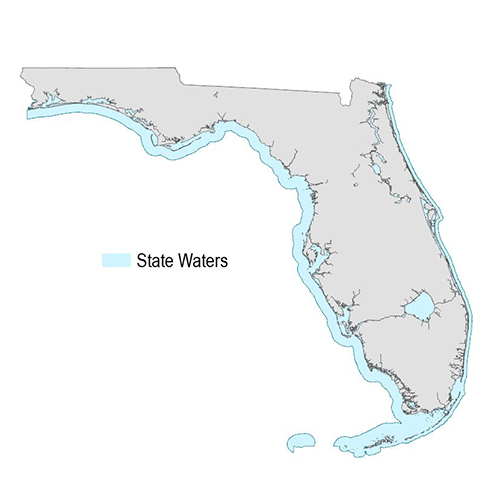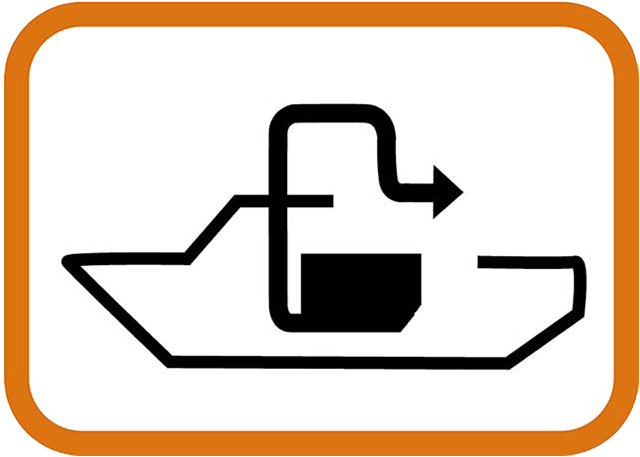Sewage Solutions
Help Keep Vessel Waste Out Of Florida's Waterways
Any amount of boat sewage from Florida’s over one million registered boats can threaten water quality and human health.

Florida has over 1,350 miles of coastline and the highest level of recreational boating in the nation. With a mild climate, diverse ecosystems, and abundant marine life, it’s no wonder why boating is on the rise in Florida. However, increased outdoor activity means the potential for increased pollution, which can negatively impact water quality and human health.
Given the large number of boats operating in the state, even a small amount of sewage from a fraction of the boats can be harmful. Boat sewage is highly concentrated—with up to 40 times as many nutrients as raw municipal sewage. Even when treated through a type I or type II Marine Sanitation Devise (MSD), those devises are required only to reduce bacteria and solids—not nutrients—which can contribute to harmful algal blooms.
Florida Sea Grant, in partnership with the Florida Department of Environmental Protection, develops tools and resources that empower the boating community to properly dispose of waste and keep our water clean.
Free Pumpout Nav App
Florida boaters now have access to the free interactive mobile app, Pumpout Nav, available on iOS and Android, to locate over 250 publicly available pumpouts, portable toilet dump stations and mobile pumpout vessels throughout the state. Use the app to:
- Locate pumpout services
- Keep a log of your pumpouts
- Learn your holding tank capacity to avoid emergency pumpouts
- Report broken stations
- and more!
Dockmasters: Download our media kit to help spread the word!
Pumpout, Don't Dump Out
Clean water is essential to protecting Florida’s natural resources, economy, and our way of life. Learn how and why to do your part in properly disposing of boat waste.
Raw or poorly treated sewage can spread diseases. Human waste contains bacteria, viruses, and potentially parasites. Contact with water contaminated by human waste can make you sick. Common symptoms include nausea, stomachache, vomiting, diarrhea, sore throat, earache, respiratory problems, skin infections and rashes. Serious waterborne diseases include hepatitis, typhoid, dysentery, and cholera.
Excess nutrients, like phosphorus and nitrogen, from sewage can contribute to harmful algae blooms (HABs). Boat sewage is highly concentrated and even if treated through a type I or type II Marine Sanitation Devise (MSD), it increases levels of nutrients in the water. Excess phosphorus and nitrogen from sewage can contribute to harmful algae blooms (HABs), which block sunlight penetration and contribute to lower oxygen level.
 During decomposition, sewage consumes the oxygen needed by marine life to survive. When sewage breaks down, it uses up oxygen in the water. The amount of dissolved oxygen in the water required to decompose organic matter is measured in terms of “Biological Oxygen Demand” or “BOD”. Waters with high BODs and HABs make it difficult for fish and other aquatic life to survive.
During decomposition, sewage consumes the oxygen needed by marine life to survive. When sewage breaks down, it uses up oxygen in the water. The amount of dissolved oxygen in the water required to decompose organic matter is measured in terms of “Biological Oxygen Demand” or “BOD”. Waters with high BODs and HABs make it difficult for fish and other aquatic life to survive.
Human waste discharged overboard can contaminate shellfish beds. Shellfish like clams, oysters, and mussels are filter feeders. They take in large volumes of water every day and eat the tiny food particles in the water, along with any bacteria and viruses that are present from sewage. Sewage discharged overboard can cause the closure of shellfish beds which people rely on to make a living and feed their families.
- Unscrew the deck waste fitting and make sure your holding tank’s air vent is open.
- Uncoil the hose, taking it off the pedestal to prevent blockages.
- Close the nozzle by putting the ball valve in a perpendicular position.
- Turn the pump on.
- Place the nozzle in the deck waste fitting and open the nozzle by putting the ball valve in the parallel position.
- Check the sight glass. If flow does not begin within one minute, place the nozzle in water for ten seconds. If there is still no flow, check for an air leak or clog in the hose or holding tank air vent.
- When the tank is empty, close the nozzle and angle it to the side to ‘crack the seal’ and allow any residual fluid to drain back down into the MSD.
- Rinse the pumpout system by pumping a bucket of water through the system then close the nozzle.
- Turn off the pump and return the hose so it is ready for the next boater.
Use onshore facilities before leaving the dock, at locations along the way, and when you return.
Get equipped with the sewage management option that works best for you, you can properly maintain, and will prevent waste from entering our waterways.
Don’t discharge overboard, especially in sensitive areas, over seagrass, shellfish beds, in low tidal flushing areas or near recreational swimming and fishing areas.
Pumpout regularly and use a pumpout log to keep track of your holding tank capacity.
Use the right toilet tissue. Choose rapidly dissolving paper to prevent clogging in your boat’s sewage system. Recycled paper options are available. Never flush ‘flushable’ wipes, even at home, they do not dissolve and will clog pipes.
Rinse with fresh water regularly.
Clean with a vinegar solution immediately after a tank has been emptied and before you add holding tank treatments. This reduces scale buildup, keeps the walls of the hose clean, and extends the life of the hose.
Use enzyme-based treatments over harmful chemical deodorizers and disinfectants. Enzyme treatments effectively break down solids, reduce odors, and are biodegradable and less toxic.
Clean and deodorize with borax and baking soda. Use a mix of ½ cup borax per 1 gallon of water. Clean with baking soda and water, and sprinkle baking soda around the rim.
Change hoses when needed. Over time, system hoses absorb the sewage smell. Wet a rag with hot water and put it around the hoses for a few minutes. Remove the rag, if it smells it may mean the odor has permeated through the hose and it is time to change it.
Report illegal discharges of oil, chemical and sewage spills to your local coast guard office, the national response center at 1-800-424-8802, Florida Fish and Wildlife Conservation Commission at 1-888-404-FWCC (3922), or your local law enforcement officer.
How-To Help
Watch videos from us and our partners to learn more about marine sanitation devices, how to pumpout, the importance of Y-valves, and more.
Laws & Regulations
- In any No Discharge Zone (NDZ). In Florida, NDZs include Destin Harbor, City of Key West, and Florida Keys National Marine Sanctuary.
- In any freshwater lakes, reservoirs, or other impoundments whose entrance and exits are too shallow for vessels with installed toilets to enter and leave.
- In any rivers not navigable by interstate vessel traffic (See: Clean Water Act, Section 312)
 All state waters which include all inland waters and coastal waters extending roughly three nautical miles offshore in the Atlantic and nine miles offshore in the Gulf of Mexico. State waters may be marked on you navigation charts or mapping GPS as ‘natural resources boundary.’
All state waters which include all inland waters and coastal waters extending roughly three nautical miles offshore in the Atlantic and nine miles offshore in the Gulf of Mexico. State waters may be marked on you navigation charts or mapping GPS as ‘natural resources boundary.’
(See: Federal law and Florida statutes section 327.53(4)(a) and 327.53 (5))
- If you have a type III MSD (holding tank), close the Y-valve and secure it with a non-releasable wire-tie or padlock, or remove the handle entirely.
- If you have a type I or II MSD without a holding tank, close the seacock and secure it with a non-releasable wire-tire or padlock, or remove the handle, or lock the door to the head with a padlock or door handle key lock.
- Yes, if your vessel is 26 feet or more in length and has an enclosed cabin with berthing facilities. The toilet may be portable or permanently installed unless it fits one of the below descriptions.
- Yes, if you have a houseboat. It must be an installed toilet with a type III MSD, and while on state waters, the Y-valve must be set to prevent overboard discharge and locked or secured.
- Yes, if you have any floating structure with enclosed living space, with berthing facilities, or work space with public access. The toilet must be permanently installed with a type III MSD or permanently attached via plumbing to shoreside sewage disposal. (See: Florida statutes section 327.53 (1-3))
- Any vessel regardless of length may install a Type II or III MSD.
- If your vessel is 65 feet or less, you may install a Type I, II, or III MSD.



